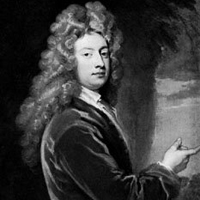The Way of the World by William Congreve: Introduction
William Congreve's last play The Way of the World is the best and brilliant example of Restoration comedy of manners. Comedy of manners is related to human behaviors. The comedy arises not because of the person lacks certain, manner, but the norms of social behaves.

William Congreve (1670-1729)
It lies in incongruous (behavior and nature). This gives rise to gallant, fop, rake and wit. So the humor and wit become important. The play The Way of the World by William Congreve represents the real picture of contemporary society of his time. It is a fine flower of Restoration literature (comedy of manners). The entire play is set in London and this urban setting keeps especial importance. Restoration comedy does not represent every strata of people. It basically represents metropolitan aristocratic society. In this period country people were ridiculed for the lack of sophistication.
When the play was first performed in 1700 it was not a huge success, but later on it was realized that the play is a classic example of comedy of manners and Congreve’s masterpiece. The title of the play is rightly suitable, first, it is inspired by the then social period during which the play was originally performed. Secondly, as a comedy of manners, it makes fun of human follies and silly social behaviors. The play transcends the time and remains a timeless comedy.
As with all comedies of this type, the play is full of many sexual and vulgar joke scenes. The Act 1 begins in the chocolate house where many people come to enjoy. Similarly, Act II begins in St. James Park. The park suggests something as freedom. This is a public place where basically fashionable people use to go to exchange their heart and to be free. Act III, too, begins in Lady Wishforts’ house, but the very scene is in the toilet. Remaining inside the toilet, Lady Wishfort is talking to Peg in serious matters. It clearly shows that how restoration people take the serious things lightly. In Act IV, lady Wishfort and Foible are talking the arrival of Sir Roland. Lady Wishfort orders to Foible to arrange the things in order and she also asks for dancer and musician if he (Sir Roland) wants to entertain. It is the showy nature of the Restoration period (people). Because people like Lady Wishfort is very much concerned on how to perceive and impress man in his first visit. As a result, she talks how to sit, how to walk, how to talk in front of him. She says, ‘I will walk from the door upon his entrance and how do I look?’ These some events clearly show that how the restoration people are very pedantic in their fashion and outer appearance.
In the same way, in another scene, Millamant talks with her lover Mirabell that she does not like to be familiar or found, she rejects to go any park not she plays together, even after the marriage, and she wants to be like unmarried one. Likewise, she wants liberty to write letters, to receive letters, to talk with a lover, to have dinner with him and to bring him in her dressing room. Even her husband must knock the door, before entering the room if her lover is inside the room. These are the general condition she talks with Mirabell before getting married. This is what actually the Restoration period was.
In the play male characters are pursuing women. We can take the instance of Mirabell, Witwood, Petuland and Fainall who seem adulterous and deceptive. It was because fashionable to court a young and beautiful woman in the contemporary society. In the play, everyone plots against everyone and deceives everyone. And the play begins, we know that Mirabell pretends to love Lady Wishfort in order to be touched with Millamant, the single heir of the property. Mr. Finall, the fortune hunter is also committed to get Millament’s fortune at hand. We find the characters in disguise and they do their best to be what they are not. To pretend to be what one is not is the way of the world. So, the title itself suggests the manner of Restoration urban aristocrats.
Center for The Way of the World
Summary of The Way of the World
The Way of the World as Restoration Comedy
Licentiousness and Superficiality in the Novel
 |
bachelorandmaster.com |